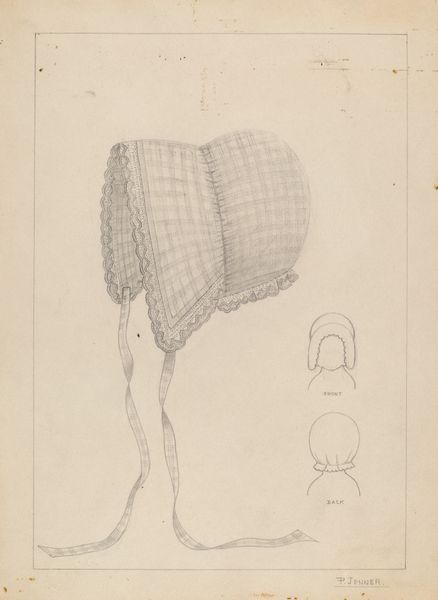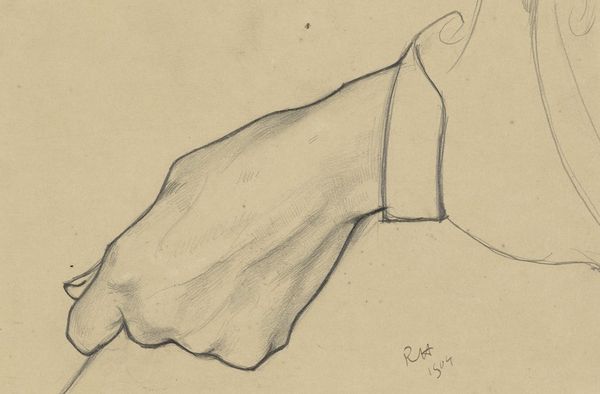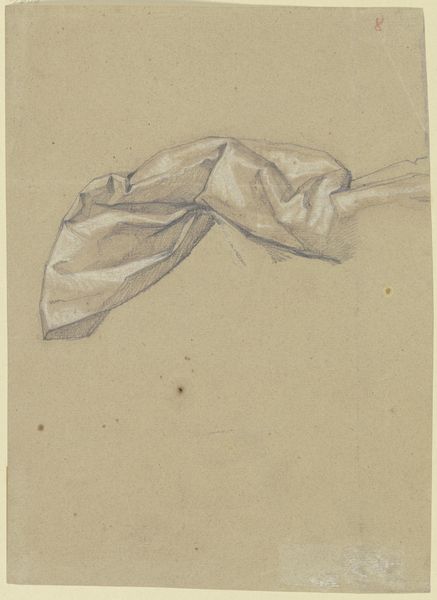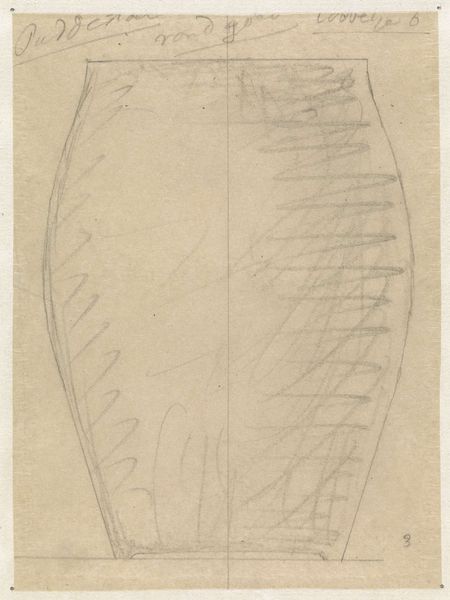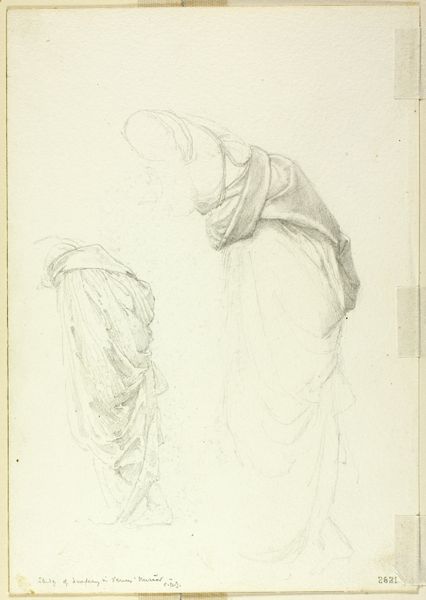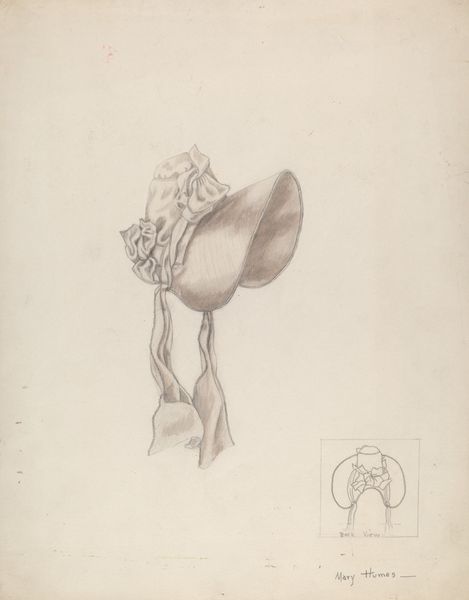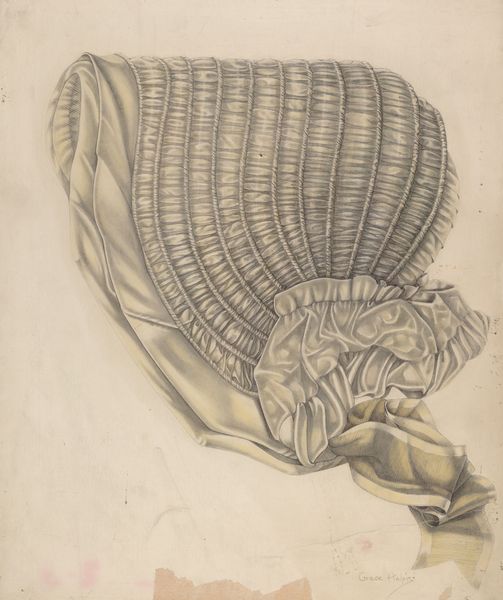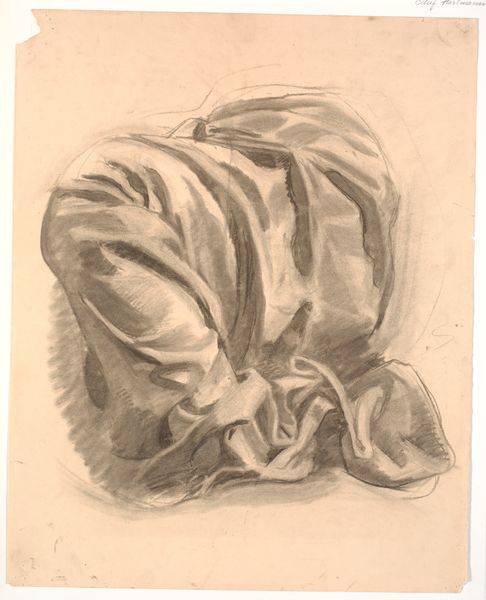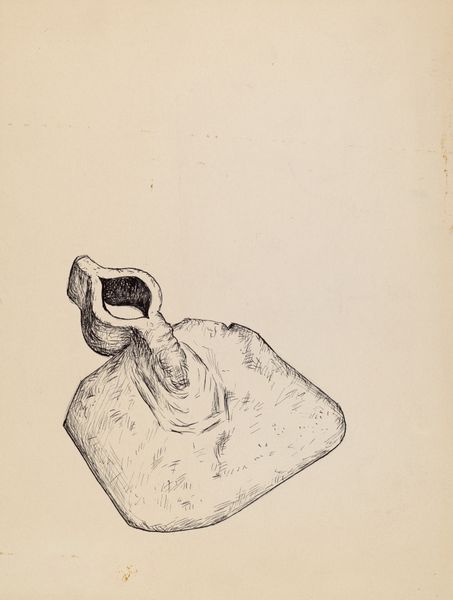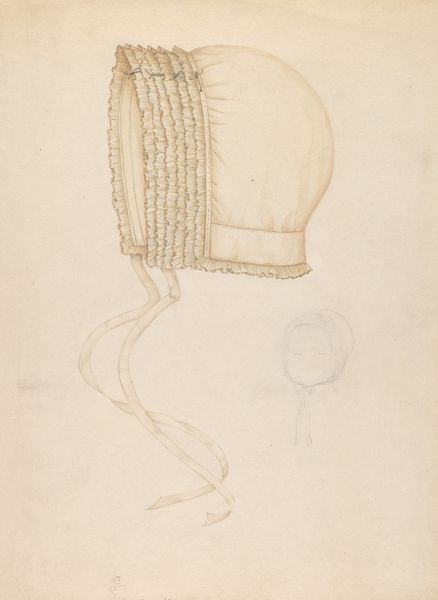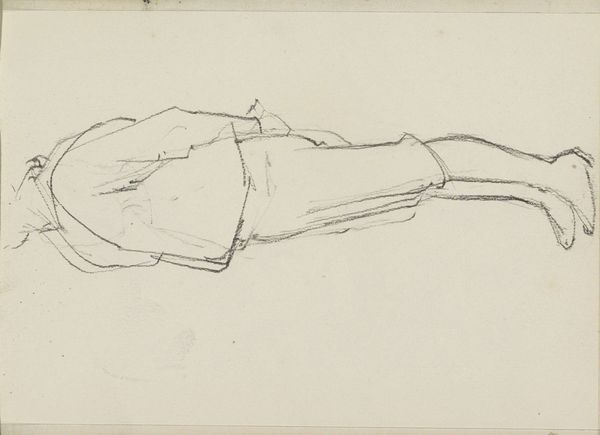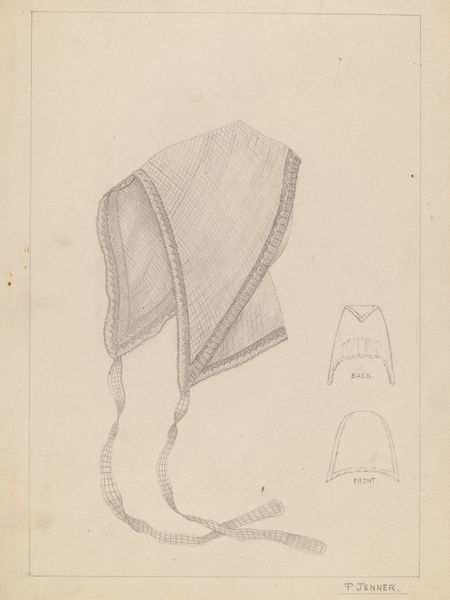
drawing, pencil
#
portrait
#
drawing
#
pencil
#
realism
Dimensions: overall: 30.6 x 22.3 cm (12 1/16 x 8 3/4 in.)
Copyright: National Gallery of Art: CC0 1.0
Curator: We're looking at a pencil drawing titled "Bonnet" by Melita Hofmann, created sometime between 1935 and 1942. Editor: My first thought? Intimacy. There's something incredibly tender about rendering this humble object with such delicate precision. It's like a love letter written in graphite. Curator: Absolutely. The bonnet, particularly within the period Hofmann was working, carried so many social and cultural meanings. It signified modesty, domesticity, and a woman’s place within a very specific societal framework. Editor: It does feel heavy in that way. Were bonnets something one always wore? Did it act almost like a shield? Protection or a… cage? It has these sweet frills around it that makes it look homey, but I can’t shake the claustrophobia of it all. Curator: It's interesting that you pick up on that. One could argue that Hofmann's meticulous detailing challenges any singular reading. The rendering feels almost forensic; there's an intensity to her observation. It’s not just about documentation but almost like an act of reclaiming space within a restrictive garment. I wonder, for instance, if it represents more than meets the eye: class, religion, etc. Editor: Like she is giving space back? To reclaim someone’s time, perhaps? To me, this looks less like a portrait of an object, and more like a glimpse of life held captive. Do we have further writings or context about Hofmann’s influences and what was happening during the specific years she crafted this piece? Curator: Well, this drawing emerged during a turbulent period, both politically and socially. Examining other of Hofmann's artworks from the time provides glimpses of how the restrictive conditions prevalent back then could have impacted a woman, influencing how such objects carried hidden burdens and untold stories. Editor: Maybe the bonnet is not about confinement, then. The rendering could simply be Hofmann seeking shelter from a loud world. The beauty in simplicity… I can only hope it gave both the wearer and Melita refuge and solace. Curator: A hopeful sentiment indeed. It really shows how much of this object has become such a wonderful, rich source of potential reflection. Editor: To bonnets! May they cover or uncover depending on how each and everyone want them to!
Comments
No comments
Be the first to comment and join the conversation on the ultimate creative platform.
